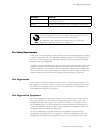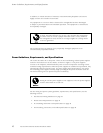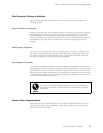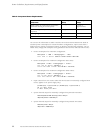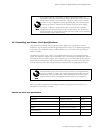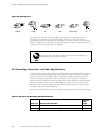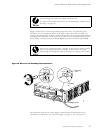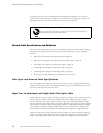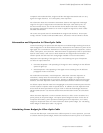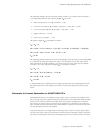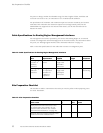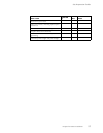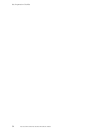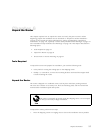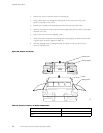Network Cable Spe
cifications and Guidelines
Compared with multimode fiber, single-mode fiber has higher bandwidth and can carry
signals for longer distances. It is consequently more expensive.
For information about the maximum transmission distance and supported wavelength
rangeforthetypesofsingle-modeandmultimodefiber-opticcableusedbyPICson
theM5andM10r
outers, see the M5 and M10 Internet Routers PIC Guide. Exceeding
the maximum transmission distances can result in significant signal loss, which causes
unreliable transmission.
The router uses optical lasers for SONET/SDH PIC single-mode interfaces. These optics
comply with IR-1 of Bellcore GR-253-CORE Issue 2, December 1995 and ANSI TI.105.06.
Attenuation
and Dispersion in Fiber-Optic Cable
Correct functioning of an optical data link depends on modulated light reaching the receiver
with enough p
ower to be demodulated correctly. Attenuation is the reduction in power of the
light signal as it is transmitted. Attenuation is caused by passive media components, such as
cables, cable splices, and connectors. While attenuation is significantly lower for optical fiber
than for oth
er media, it still occurs in both multimode and single-mode transmission. An
efficient optical data link must have enough light available to overcome attenuation.
Dispersion
is the spreading of the signal in time. The following two types of dispersion
can affect an op tical data link:
• Chromatic
dispersion—The spreading of the signal in time resulting from the different
speeds of light rays.
• Modal disp
ersion—The spreading of the signal in time resulting from the different
propagation modes in the fiber.
For multim
ode transmission, modal dispersion, rather than chromatic dispersion or
attenuation, usually limits the maximum bit rate and link length. For single-mode
transmission, modal dispersion is not a factor. However, at higher bit rates and over longer
distance
s, chromatic d ispersion rather than modal dispersion limits maximum link length.
An efficient optical data link must have enough light to exceed the minimum power that the
receiver
requires to operate w ithin its specifications. In addition, the total dispersion must
be less than the lim its specified for the type o f link in Telcordia Technologies document
GR-253-CORE(Section4.3)andInternational Telecommunications Union (ITU) document
G.957.
When chromatic dispersion is at the maximum allowed, its effect can be considered as a
power pe
nalty in the power budget. The optical power budget must allow for the sum of
component attenuation, power penalties (including those from dispersion), and a safety
margin for unexpected losses. For more information about power budget, see “Calculating
Power Bu
dget for Fiber-Optic Cable” on page 49.
Calculating Power Budget for Fiber-Optic Cable
To ensur
e that fiber-optic connections have sufficient power for correct operation, you need
to calculate the link’s power budget, which is the maximum amount of power it can transmit.
Prepare for Router Installation
49



